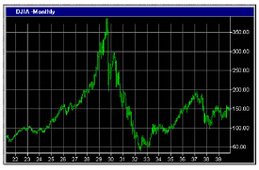Getting started to stock market
As soon as you begin to bring in enough money so that a portion of it may be a set aside for investing, a plan is necessary to take full advantage of that money. The amount of money available to invest also plays an important role in what investments can be purchased. Some investments are subject to limited access because they require certain minimum amounts. More generally, investing a greater amount of money opens the door to a portfolio with more risk and potentially greater returns. However, despite the importance of investing to your overall long-term financial situation, money for health, auto and life insurance and retirement plan contributions should be a higher priority, and should be budgeted for before beginning to invest. Additionally, investing should begin after high-interest debt, especially credit card debt, is paid off. Because after-tax returns will probably not exceed the interest rates paid on credit card debt, paying off the debt first will increase the amount of money you have each month.
After subtracting out essentials and debt, the first division to make within available funds is between savings and funds to invest. Savings allow for access to cash without the fees and lost opportunities associated with removing money from investments ahead of schedule. They should be highly liquid and will usually be located in a savings account, CD or other safe low-yield investment vehicle. Savings should include an emergency fund and funds for major near term purchases. To create a sufficient emergency fund, you should amass enough cash to pay bills for a couple of months in the event of unemployment to cover the costs of major auto repairs or similar unexpected major expenses.
Once those emergency savings are set aside, you can make decisions about where to invest the remainder of your money. These funds differ from emergency savings because they will expected to outpace inflation, taxes, and other drains on finances to serve as a source of income and security over long term. In order to achieve higher returns, your money will be subject to a somewhat higher level of risk than for the emergency funds you put in the safe but low interest investment. One of the most important aspects of investing is determining time horizons. Put simply, it is crucial to know when you will need the money. Common time horizons are based on large future expenses, such as retirement, college, houses or cars. Knowing when money will be needed allows for the most effective investment strategy to be tailored to fit the specific goals that have been outlined.
When funds for investing have been earmarked, it is time to decide how those funds will be augmented in the future. There are a variety of plans to maintain a steady pace of contributions to investments. Of course, the amount invested will have to be adjusted periodically as income and expenses fluctuate, but developing the habit of putting away some amount of money each month is an important part of building a successful portfolio.


No comments:
Post a Comment